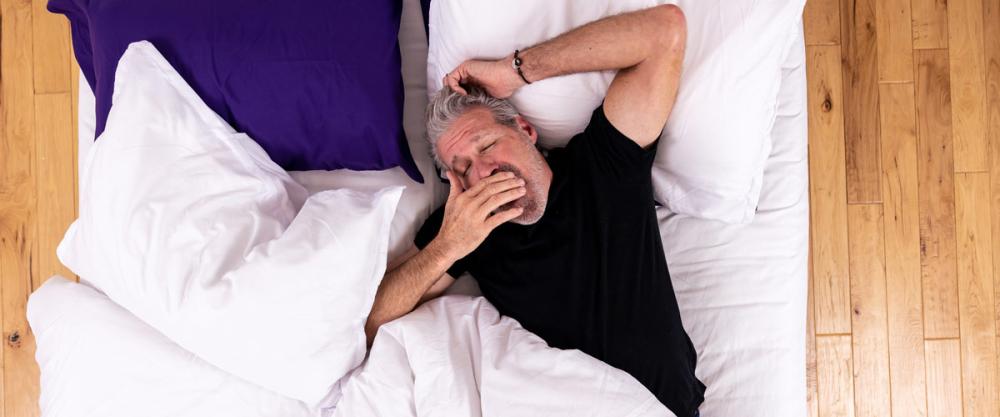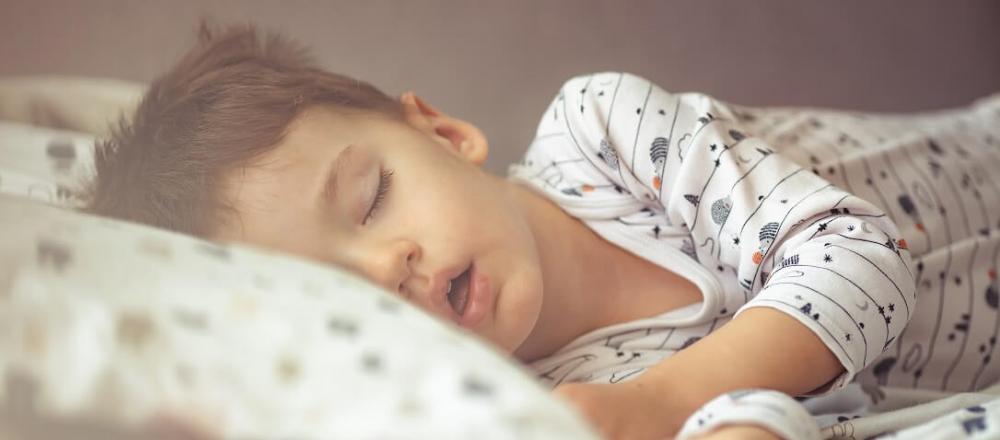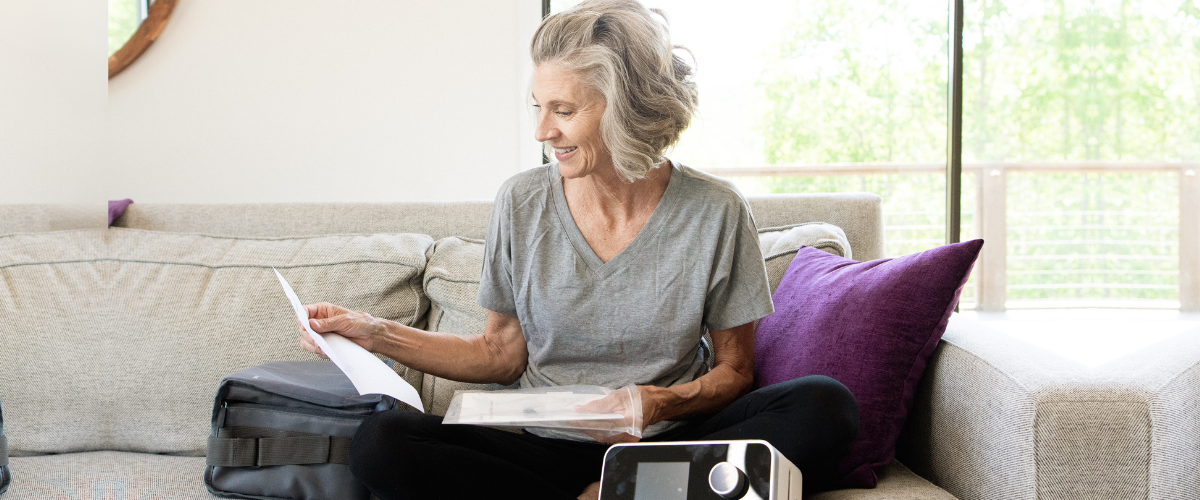If you’re having difficulty breathing due to sleep apnea, the last thing you want to do is spend all night sucking germs and pathogens into your body! Yet if you use a dirty CPAP machine that’s exactly what you’re doing.
Thankfully, it’s easy to avoid the side effects of a dirty CPAP and the health problems that they can lead to. Using your CPAP machine is the beginning of your beautiful journey to better sleep, but it does require a little elbow grease. Read on to learn what can happen if you don’t clean your CPAP and how to avoid CPAP infection.
Table of Contents
Can You Get and Infection From Your CPAP Supplies?
Out of the box, your CPAP device and it’s parts are sterile and equipped with filters specifically to avoid any unwanted pathogens getting into your airways. It’s extremely unlikely that you’ll develop an infection from CPAP therapy alone.
However, as you use your CPAP night after night you introduce body oils, dirt, and moisture that can turn your CPAP system into a breeding ground for germs, bacteria, and mold. If you don’t regularly clean and replace your CPAP supplies, your air pressure could introduce these infectants into your airways.
Consider that when you wear your CPAP mask you expose it to your breath, skin oils, sweat, and dead skin cells. Your PAP machine will draw in dust and allergens from the surrounding area. And if you have a CPAP with a humidifier then moisture can collect, creating the perfect environment for mold, mildew, viruses, fungus, yeast, and bacteria to thrive in.
Using dirty CPAP equipment could potentially lead to:
- Sinus infections
- Respiratory infections
- Allergic reactions (including coughing, sneezing, sore throat, and runny nose)
- Pneumonitis (inflammation of the lungs)
- Pneumonia
- Bronchitis
How To Tell When Your CPAP Is Dirty
1. The Smell
Go ahead and take a whiff of your CPAP mask and tubing. We mean a good one. Get in close and inhale for any signs of musty scents. If you smell mildew, mold, or anything bad then you might have mold or bacteria collecting in your CPAP supplies.
2. The Look
Look at your CPAP machine; if it’s covered in a nice layer of dust then you probably haven't cleaned it in a while.
Then look at your CPAP filters. If they’re darkened or discolored then it’s time to either clean or replace them.
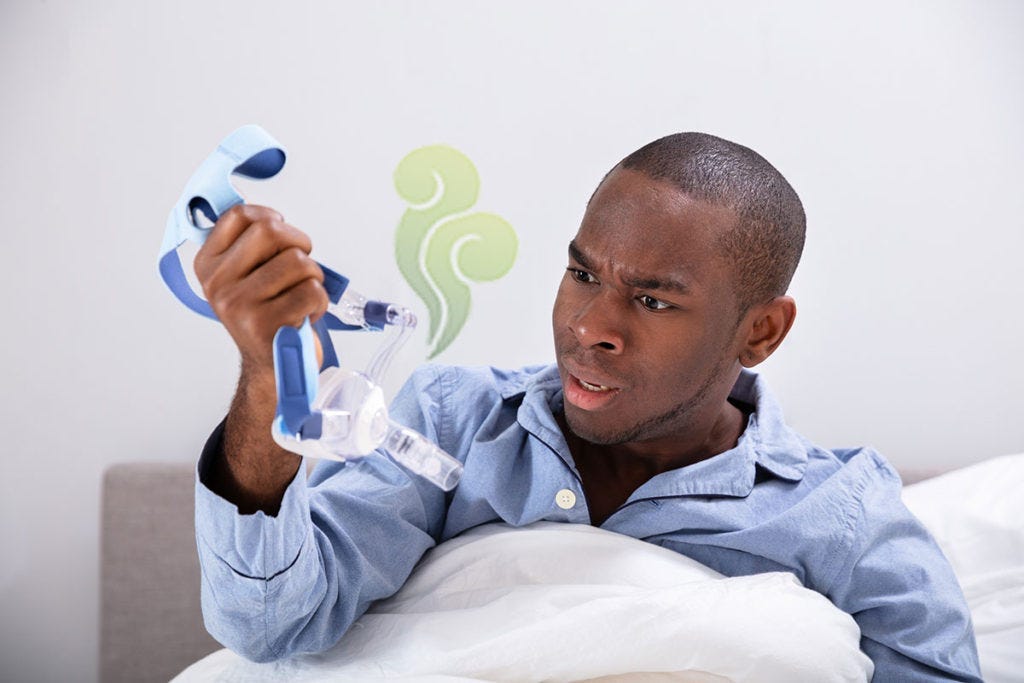

If your mask and tubing show any discoloration, they need to be either cleaned or replaced as well. Make sure there isn’t any moisture left in them.
Check out your CPAP tubing and humidifier water chamber for any signs of film, mold, or mineral build-up.
3. Skin Irritation
Are you waking up with soreness, acne, or peeling skin? The oils, skin cells, and dirt that collect on your mask can be absorbed, leading to discomfort and even breakouts. This is a clear sign that it’s time to clean your CPAP mask or even replace your mask cushions.
4. Frequent Infections
Are you coughing AGAIN? Do you have ANOTHER sinus infection? What, your doctor put you on MORE antibiotics? These may be CPAP infection symptoms due to having dirty CPAP equipment. Break the cycle and feel better with a regular CPAP cleaning schedule.
How to Avoid Infection
- Clean your CPAP supplies at least once a week with soap and warm water. If you’d like, you can also disinfect your CPAP mask, tubing, and humidifier water chamber with a soak in diluted vinegar.
- Make sure your CPAP mask, tubing, and filters are completely dry before using them.
- Never let water or moisture sit in your CPAP equipment for long periods of time. Even condensation can promote the growth of bacteria and mold when left too long. Also, empty your humidifier water chamber every day.
- Consider heated tubing. In addition to gently warming your airflow and making CPAP use generally more pleasant, a heated tube helps prevent humidification from building up in your tubing and mask.
- Always use distilled water in your humidifier. Tap water often contains minerals that can lead to buildup in your CPAP parts. In rare cases it may also be possible for tap water to introduce bacteria or amoebas into your airflow.
- Consider an in-line bacterial filter. If you’re prone to sickness or allergies, an in-line bacterial/viral filter can offer peace of mind by adding an additional barrier from germs, viruses, and allergens.
- Replace your CPAP supplies according to the recommended schedule. We’ll cover the schedule below!
- Never share CPAP equipment or supplies. You’ll also be sharing whatever germs the other CPAP user may have.
- Never buy used CPAP equipment. It may be tempting to find a bargain on a CPAP machine, but you don’t know what the previous owner’s cleanliness habits were like. Once germs or mold begin to grow within the nooks and crannies of a CPAP machine it can be incredibly hard to fully sanitize it.
How to Clean Your CPAP Supplies
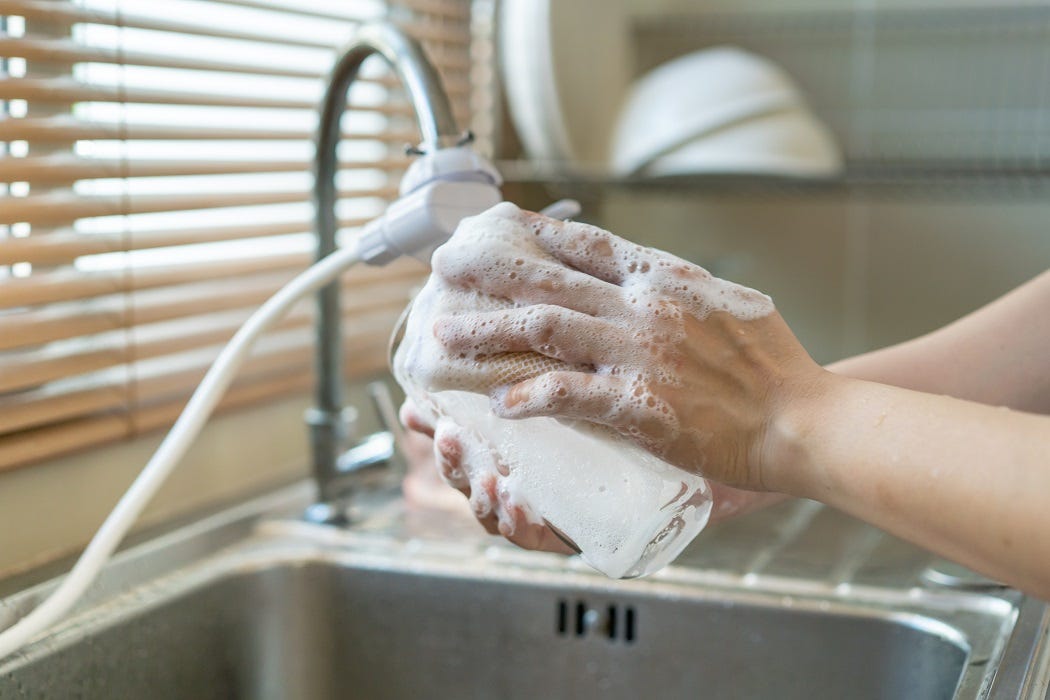

Cleaning your CPAP equipment is easy! Follow these steps once a week:
- Fill up a sink or large container with warm water, then add a few drops of gentle dish detergent.
- Take apart your CPAP mask, tubing, and water chamber and place them in the water. Swirl them around for about five minutes.
- Rinse each part thoroughly and hang them up to dry completely before use.
- Clean your CPAP filters by rinsing them with warm water, wringing them out, and allowing them to dry.
- Clean your CPAP machine by unplugging it first, then wiping it down with a warm, damp cloth.
Do I Need a CPAP Sanitizer?
If you tend to slack off on cleaning your CPAP supplies as often as recommended, a CPAP cleaner can be a convenient way to protect yourself from germs between cleanings. Both UV and ozone sanitizing machines have been shown to remove over 99% of harmful bacteria, viruses, and pathogens.
That said, a CPAP sanitizer is not a substitute for manual cleaning. That’s because CPAP cleaners won’t remove skin oils, dirt, or dead skin cells like hand cleaning will.
On the other hand, if you’re regularly cleaning and replacing your CPAP supplies, you probably don’t have to worry about sanitizing them. A good scrub with soapy water can help you avoid infection.
Within the Philips CPAP recall, Philips has identified that using your ozone CPAP cleaner on your CPAP machine may contribute to the breakdown of the affected foam.
Learn more about whether ozone CPAP cleaners are safeLearn more about the Philips CPAP recall
How OFten Should I Replace My CPAP Supplies?
Even with regular cleanings, your CPAP supplies will wear out over time. When this happens, cracks and micro-tears can become hotspots for germs and mold that cleaning can’t reach.
In order to keep your CPAP clean and working at peak performance you should regularly replace your equipment.
- Disposable Filters - Every 30 days (or sooner if discolored)
- Reusable Filters - Every 6 months (or sooner if discolored)
- Nasal Cushions and Nasal Pillows - Every 2 weeks
- Full Face Mask Cushions - Every month
- CPAP Tubing - Every 3 months
- Headgear - Every 6 months
- Humidifier Water Chambers - Every 6 months
Take the pressure off of remembering to replace your CPAP equipment by joining our subscription program. You'll receive awesome discounts and your supplies will automatically arrive in the mail on a regular basis.


